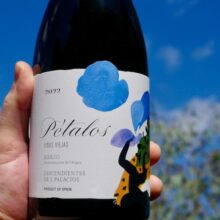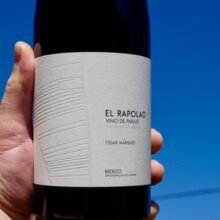
Castilla y León
Bierzo
Bierzo is a basin surrounded by four distinct mountain ranges, from which a number of significant rivers (most notably the Sil) carve their way west, draining central Spain to the Coast via the ‘low rivers’ (Rias Baixas) of Galicia. Along with the Sil, which flows west from Ponferrada, there is also Rio Cua, emanating from Cacabelos and Rio Burbia from Vilafranca del Bierzo. Rising from the valley floor are clay-dirt hillslopes, and surrounding these at the perimeter of the valley are mountain slopes with mineral soils (in particular, those above Corullón in the north-west). The region is green and mountainous, with chestnut forests facing to the north and south-facing exposures given to viticulture. Bierzo is also historically famous as one of the traditional stops along the ‘pilgrimage’ route to Santiago de Compostela.
DO Bierzo – honorary Galicians
Although politically a part of continental Spain, in wine logic we align Bierzo with the Galician-Atlantic DOs, on the basis of two inter-related continuities. Firstly, the River Sil (which converges with the Miño just west of Ribeira Sacra) defines the main wine regions of Galicia, and this river originates in Bierzo. Secondly, along the course of the Miño, climatic changes define the natural order of Vitis Vinifera throughout Galicia, beginning with the Godello and Mencia of Bierzo. As one follows the river west, downhill from the continental heights of Bierzo, eventually arriving at sealevel in the Atlantic DO of Rias Baixas, decreasing continentality progressively alters the conditions which determine the best variety of each region. Bierzo, atop the river has the most continental climate (the greatest amount of daytime solar radiation), and a corresponding high diurnal temperature range, with the coolest nights. This daytime warmth is the maximum that Mencia can manage – further east into the extreme continentality of Rioja and Ribera del Duero, for example, and the daytime sun is too much – Mencia becomes sloppy-soft with chocolatey tannins and too little acidity – cool nights cannot save what is lost during the day. As one travels west, lower daytime temperatures eventually mean that the continental varieties, Mencia and Godello do not ripen sufficiently, and coastal, Atlantic varieties (Brancellao, Treixadura and eventually Albariño) take over.
Bierzo has two millennia of history in wine production, dating back to the Roman occupation (1st-4th centuries AD). After all this time, the economy of the area was closely tied to the grape, but the late-19th century advent of phylloxera interrupted all this. After phylloxera, 40% of the population migrated from the area. Re-planting on American rootstocks, at first in locations based on historical memory and lore saw 30% of the area renewed, but further difficulties arose from 1935 after the Civil War. As the region got poorer, plantings shifted down into the valleys on rich soils. Non-local varieties, particularly Palomino, were planted for their high yields, closely followed by the advent of industrial fertilisers. The old varieties and ways were lost, and a 50 year black age persisted until the late 80s, when a philosophical re-birth slowly emerged. By the 1980s, as with most of Galicia, the high crop white, Palomino dominated, accounting for 50% of the region’s plantings.
Nowadays, as the region reverts to its native Mencia and Godello, there are 4500 hectares planted, 90% red, mainly in small plots of 400-800 square metres. Grapes are grown for wine between 300 and 2000 metres’ altitude. The main local grape is Mencia. The white Godello is also important, and there’s a little Garnacha Tintorera (aka the pink-fleshed Alicante Bouchet) and traces of another 20 local varieties, mostly red. Historically the white varieties were blended in with the reds to make ‘Clarete’ – fruity, light pink wines made with about a quarter white grapes. These were the typical local wines for a long while – not just here in Bierzo, but in Ribera del Duero and Rioja too.
Soils and sites
In Bierzo, there are three main vineyard locations – the fertile valley floor, intermediate hill-slopes of red clay dirt, and mountain slopes with schist (slate) mineral soils. No good wine comes from Bierzo’s valley floor. Both the hillside material and the mountain gear are capable of excellence, depending on orientation (south-facing mountain slopes are a warmer site promoting softer Mencia than a north-facing hillside), and clay is cooler than either granite or schist. Along with the complex terroir, altitude and aspect options, keep in mind that Bierzo is a fundamentally mixed continental- Atlantic climate.
The oldest vines are in the mountain slopes, and these vineyards are where the heritage material of Bierzo is to be found. Although most of Bierzo was wiped out by phylloxera, and most of the rest was debased by the practices of the 20th century, some vineyards in the high parts were re-planted by massale selection from the scattered survivors of phylloxera, and these are a direct link to Vitis Vinifera’s long history of evolution in situ here. Vineyards such as those of DJP claim a direct historical continuity with this legacy, and are a potential source for the authentic renewal of Bierzo. The intermediate slopes – the clay hills of the valley, however, are mostly younger, planted during the rebirth period of the 1980s and 90s. Some of this is planted to industrial clones from nurseries, some of it to heritage genetics sourced from the remnant old vines in the mountains.


